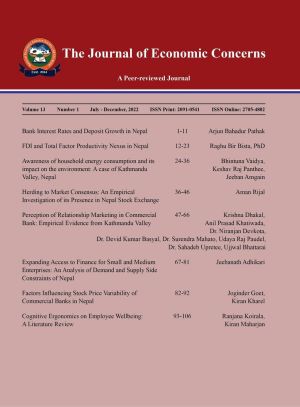FDI and Total Factor Productivity Nexus in Nepal
DOI:
https://doi.org/10.3126/tjec.v13i1.57058Keywords:
FDI, TFP Growth, Economic Reform, Liberalization, Firm, NepalAbstract
This study empirically investigates the impact of FDI on the TFP growth of firms in Nepal from 1990 to 2018, employing an econometric model based on the Cobb-Douglass production function and a theoretical Solow model of the TFP growth accounting method. The study used a time series database (1990–2018). As a result, the econometric and non-parametric TFP estimations provide mostly positive TFP growth of FDI firms in Nepal, except for a few cases influenced by political and security disturbances. Positive TFP growth in almost years indicates increased productivity of FDI firms at a lower than expected level, despite the fact that FDI firms are still constrained by problems such as massive inferior labor, no significant technological and financial transfer, and a poor business environment. Issues of continuity and stability between the two periods indicate the unpredictable situation of productivity. Therefore, FDI policy framework should focus on output and outcomes to invite FDI rather than FDI size, nature, and source.




